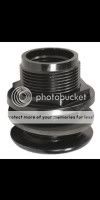KaliKushman
Active Member
So I am trying to figure out which pump will best satisfy my needs for a very large aero system. Of course cool reservoir temps and pump reliability are of the utmost importance. When I started this project (first aero) I thought that external pumps were really my only option for keeping reservoirs cool but now I'm starting to think otherwise. The fact that I saved money and went with only 1/10 hp chillers also made me think external was the way to go.They are keeping my 70 gal reservoirs between 65-68 when they are totally full and between 60-65 when they are not completly full. I have been using 1/2 hp cast iron pumps that push 720 GPH.
http://www.northerntool.com/webapp/wcs/stores/servlet/product_6970_7738_7738
They work great especially for the price but they only work for about two weeks then I have to replace them. The replacements are free but I have to drive an hour away to get them. Needless to say I am not sleeping that well with this current pump situation. So I have looked at replacing them with these more expensive stainless steel 1 hp american made pump by Wayne.
http://www.northerntool.com/webapp/wcs/stores/servlet/product_6970_200311411_200311411?cm_sp=Customer driven-_-Recently Viewed-_-Category Page
But now I am starting to think that 1/4 or 1/3 hp sump pumps are really the way to go as far as price and most importantly reliability. Plus a 1/4 hp sump pump pushes more gph then a 1 hp external pump(don't ask me why?). My only problem would be heat. But if cycle timers are set to run 2 minutes on and 5 minutes off I am starting to think that two minutes on doesn't really give the pump time to heat up. That is what I really need to figure out. Earl and all experienced areo growers please help! How do you guys set your cycle timers not only to most benifit the plants but also the life of your pumps and temp of your reservoirs. I've heard shorter cycles are better but I feel like 1 minute on 2 minutes off puts excessive wear on your pump. Has anyone found a cycle timer that allows for different day and night settings. My CAP cycle timers do not have this feature which sucks. My last question is how do I calculate what the ideal GPH would be for the size of my system? So experienced aero growers help me get a better nights sleep. External or Sump pump? How many GPH? Do you like that Wayne pump? Or can you reccomend a very reliable sump pump.
http://www.northerntool.com/webapp/wcs/stores/servlet/product_6970_7738_7738
They work great especially for the price but they only work for about two weeks then I have to replace them. The replacements are free but I have to drive an hour away to get them. Needless to say I am not sleeping that well with this current pump situation. So I have looked at replacing them with these more expensive stainless steel 1 hp american made pump by Wayne.
http://www.northerntool.com/webapp/wcs/stores/servlet/product_6970_200311411_200311411?cm_sp=Customer driven-_-Recently Viewed-_-Category Page
But now I am starting to think that 1/4 or 1/3 hp sump pumps are really the way to go as far as price and most importantly reliability. Plus a 1/4 hp sump pump pushes more gph then a 1 hp external pump(don't ask me why?). My only problem would be heat. But if cycle timers are set to run 2 minutes on and 5 minutes off I am starting to think that two minutes on doesn't really give the pump time to heat up. That is what I really need to figure out. Earl and all experienced areo growers please help! How do you guys set your cycle timers not only to most benifit the plants but also the life of your pumps and temp of your reservoirs. I've heard shorter cycles are better but I feel like 1 minute on 2 minutes off puts excessive wear on your pump. Has anyone found a cycle timer that allows for different day and night settings. My CAP cycle timers do not have this feature which sucks. My last question is how do I calculate what the ideal GPH would be for the size of my system? So experienced aero growers help me get a better nights sleep. External or Sump pump? How many GPH? Do you like that Wayne pump? Or can you reccomend a very reliable sump pump.



